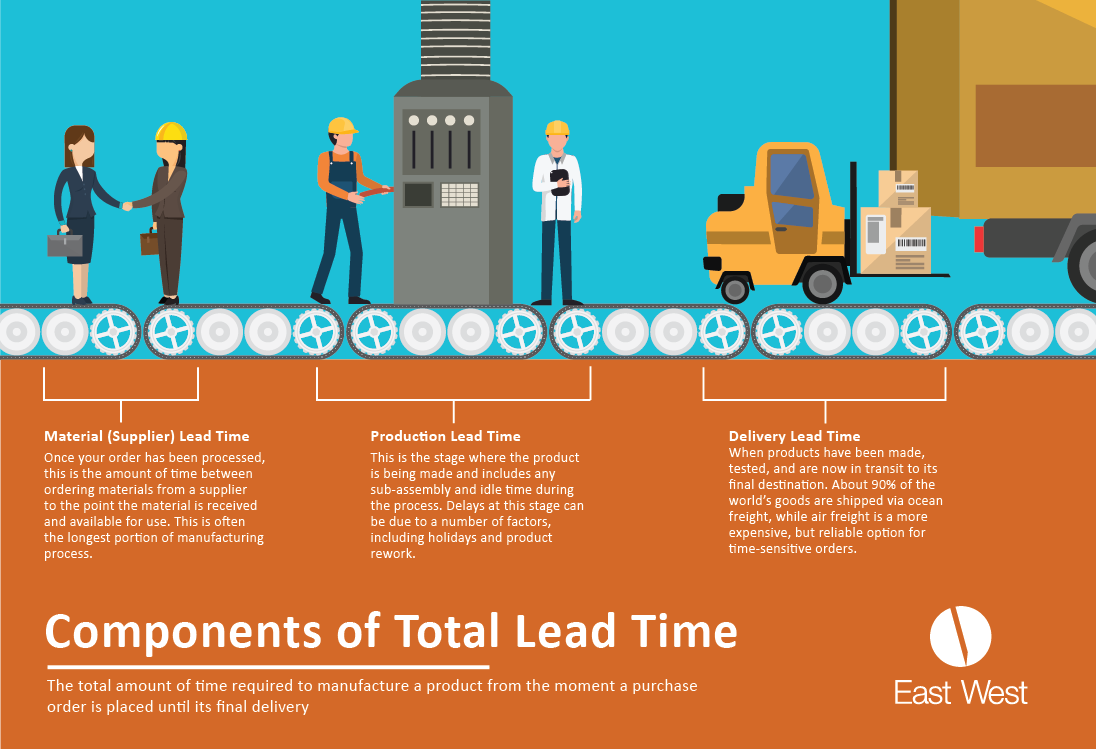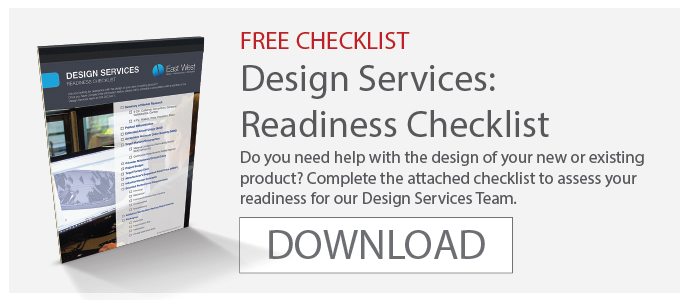It’s everywhere. You can’t escape it. Lead time, lead time, lead time! You’ve heard it repeatedly, but has anyone taken the time to explain to you exactly what lead time is and what goes into it?
Don’t fret, we’re here to help. It’s a complex beast, but we’ll do our best to break it down so it even makes sense to those who are just getting their feet wet in this wild world of product manufacturing.
TO GET EVEN MORE IN DEPTH, GET THIS FREE DOWNLOAD OF THE COMPLETE GUIDE TO LEAD TIMES

Total lead time is an all-encompassing term describing the latency between the moment a purchase order is submitted and its ultimate delivery. It includes several stages with their own, independent lead times, each needing to be completed before the next can begin.
The first and often longest phase is material lead time, also referred to as supplier lead time. This is when your order has been submitted and all the materials required to make your final product are now being sourced from various suppliers across the globe. This stage ends once all components have been received and we move onto…
…production lead time. Exactly as it sounds, this is when all the materials your manufacturer just received are assembled into the final version of your product. This stage, including sub-assembly, packaging and getting your items onto pallets, can be greatly influenced by things like holidays and product rework.
Finally! Your products have rolled off the line, they’re beautifully packaged and ready to be taken to their forever homes. Welcome to the final stage, affectionately known as delivery lead time. Here, your products will be placed on a truck at the factory and brought to port, if using ocean freight. At port, they will be placed in a container and safely nestled onto a vessel for an always sunny, always smooth (why are you laughing?) ride across our great oceans. Keep in mind there are other shipping options as well, which we get into more in The Complete Guide to Lead Times.
What happens next will depend on who you’re working with. With a manufacturing partner like East West, for example, once the containers reach their final port, we arrange for a trucking company to transport the goods to our warehouse where your carriers will be notified that they are available to be picked up and taken to your facility. In other cases, you may be responsible for transporting the goods straight from the port to your warehouse.
Don’t think we’re done giving you all of this juicy information already! No way! Get your copy of our free ebook, The Complete Guide to Lead Times, for more information, including how to shorten lead time, how to avoid delays and selecting the right manufacturing partner.
Recommended reading:
- How Do I Manage Shipping Lead Times in Overseas Manufacturing
- Managing Long Lead Time Component Ordering
- 3 Benefits of Using a Vendor Managed Inventory (VMI) Program




.jpg?width=176&height=56&name=MR_associatedNetwork_logo%20(1).jpg)